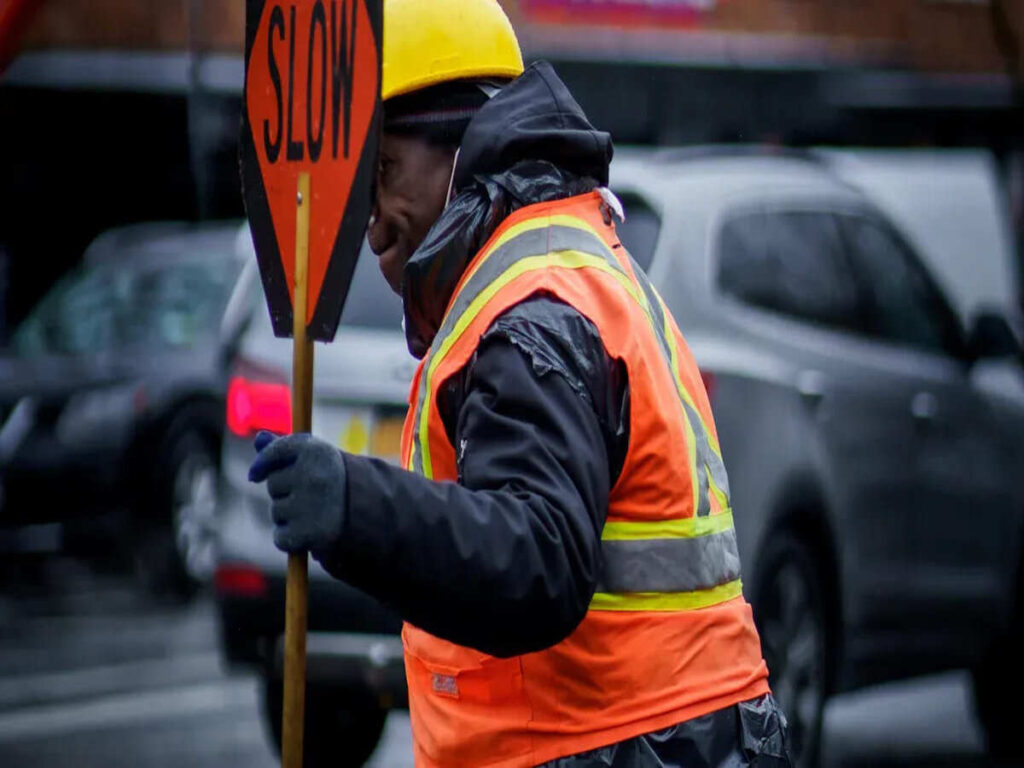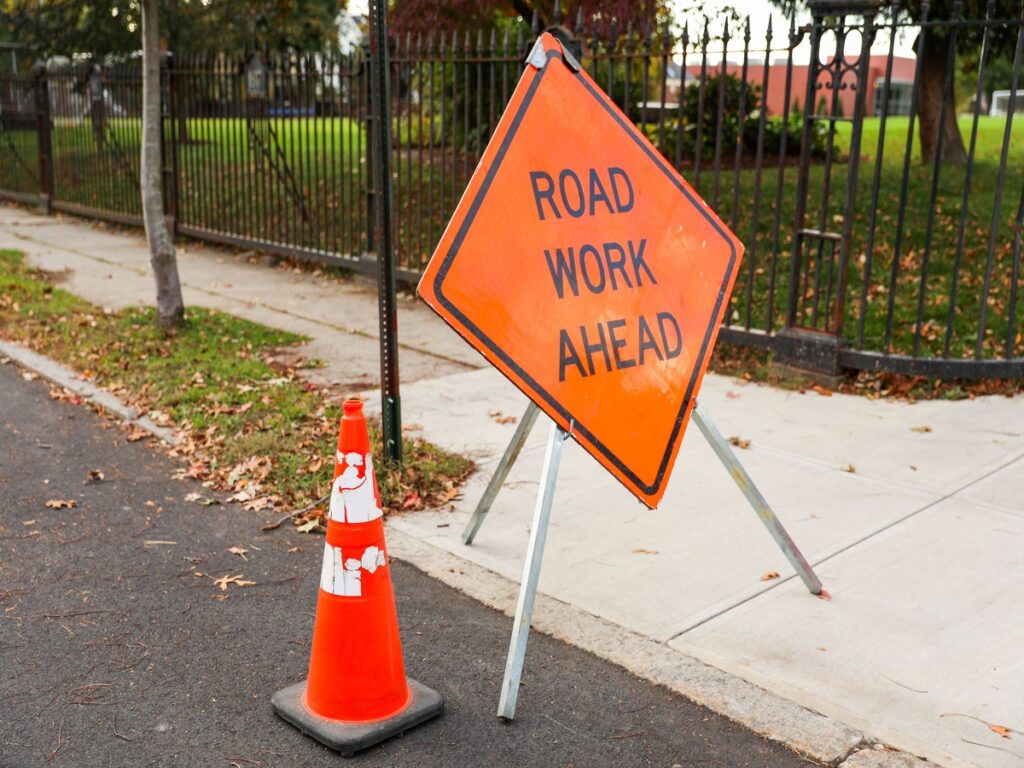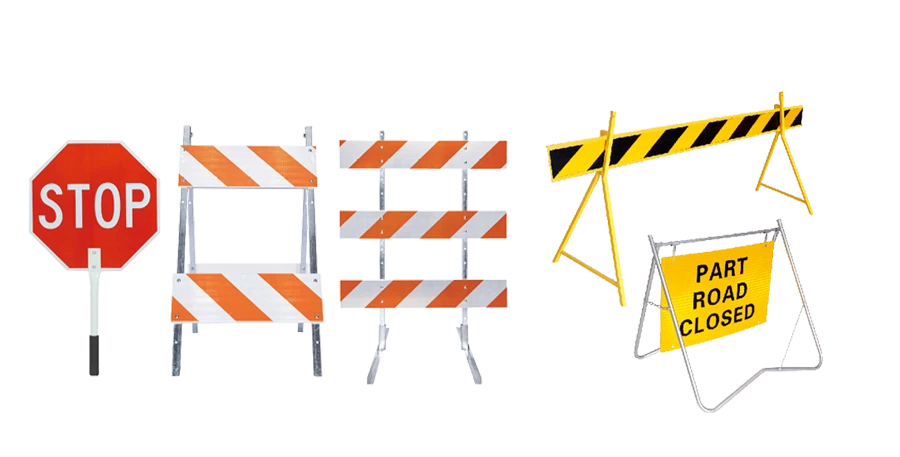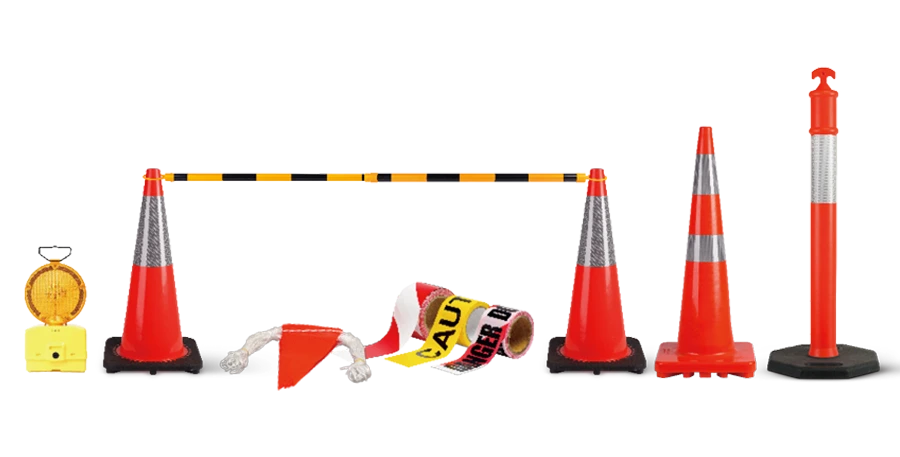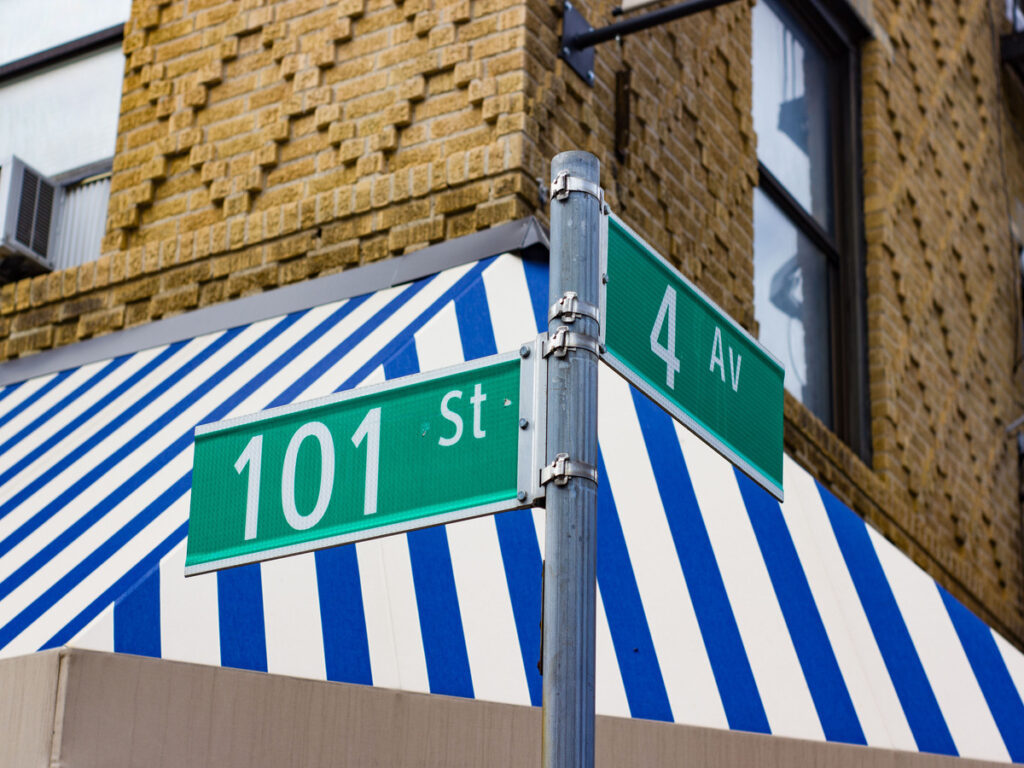
Metal post brackets play a crucial role in ensuring the strength and stability of traffic sign installations. Choosing the right type of bracket can significantly affect the durability and functionality of your project. Round metal post brackets are ideal for designs that require flexibility and smooth curves, while square brackets are better suited for heavy-duty applications that demand added strength and stability.
To choose the right one, think about the weight it needs to hold, the design you want, and if it fits round or square tubing. Both types have their own advantages, so knowing what you need will help your project succeed.
For a reliable and durable solution, check out OPTRAFFIC Street Name Bracket – 1 Way, a round metal post bracket designed specifically for traffic sign installations, providing long-lasting performance.
Structural Strength and Stability
Load-Bearing Capacity of Round Metal Post Brackets vs Square Tubing Brackets
Round and square brackets each have their own strengths. Round brackets spread weight evenly across their surface. This makes them strong and long-lasting, especially for heavy loads. Square brackets, however, are better for holding very heavy weights. Their stiff design makes them great for tough jobs.
Square brackets might bend slightly because of how bolts connect. Research shows square brackets transfer weight well and stay steady. This makes them a good pick for projects needing strong support. Round brackets, while not as strong for heavy loads, work better when flexibility is important.
Resistance to Bending, Twisting, and External Forces
Round post brackets handle bending and twisting better than square ones. Their round shape spreads force evenly, avoiding weak spots. This makes them great for windy or shaky conditions. Square brackets, with flat sides, can crack at the corners under stress.
Still, square post brackets are very stable in calm conditions. Their stiff design works well when outside forces are low. Round brackets, on the other hand, adjust better to moving forces. They are flexible and strong in tough environments.
Performance Under Dynamic Loads (e.g., Wind, Vibrations)
Wind and vibrations test how well brackets can adapt. Round brackets perform best in these situations. They spread stress evenly, staying strong under changing forces. This makes them perfect for outdoor or windy projects.
Square brackets are strong but less flexible under moving forces. Their stiff design can cause stress to build up in certain spots. This might lead to breaking. However, they are great for projects where forces don’t change much.
| Feature | Round Tubing | Square Tubing |
|---|---|---|
| Strength and Durability | Stronger due to even weight spread | Weaker because stress builds at corners |
| Malleability | Easier to bend and shape | Simple to cut but harder to bend |
| Weldability | Harder to weld because of round shape | Easier to weld with flat surfaces |
| Applications | Best for strength and smooth designs | Great for looks and tight spaces |
Both types of sign brackets have their benefits. Pick based on your project’s needs, like weight and environment.
Aesthetic and Design Considerations

Visual Appeal of Round Tubing vs Square Tubing Brackets
The shape of metal tubing affects how your project looks. Round tubing has smooth curves, giving it a modern and stylish look. This makes it great for furniture or decorative projects where beauty matters. Square tubing has straight lines and sharp edges. This gives it a bold and strong appearance, perfect for industrial or simple designs.
When picking between round and square tubing, think about your design. Round brackets fit well with curved or flowing shapes. Square brackets stand out in designs with straight or angular lines.
Compatibility with Architectural Styles
Metal sign brackets should match your project’s style. Round tubing works well with modern or natural designs. Its smooth shape adds elegance to homes or art pieces. Square tubing fits better with traditional or industrial styles. Its stiff shape matches buildings with straight lines and sharp corners.
Also, think about how brackets work with other materials. Round brackets look great with wood or glass, adding a natural touch. Square brackets pair better with concrete or steel, showing strength and toughness.
Customization and Finishing Options
You can customize metal brackets to fit your project. Both round and square brackets have finishing options to improve their look and strength.
| Finishing Option | Description |
|---|---|
| Surface Finishes | Includes Orbital Sander for inside parts and Brushed for outside. |
| Powder Coating | Adds a strong finish with many color choices, over 50 available. |
| Plating and Coatings | Improves strength and protects against rust, meeting MIL or ASTM standards. |
These finishes help your brackets look good and last longer. Powder coating offers many colors to match your design. Brushed finishes add texture and style. Whether you choose round or square tubing, these options make your brackets durable and attractive.
Installation and Compatibility

Easy Setup for Round Metal Post Brackets
Round brackets are simple to install because of their flexible design. They can be mounted outside, which saves time during setup. You can adjust them up, down, or sideways to fit uneven surfaces. This is helpful for gates or fences that might sag later.
The materials used in round brackets make them strong and long-lasting. Parts made from 316 stainless steel resist rust, even in tough weather. Special polymers keep the brackets sturdy without corroding. The included screws are made of hardened stainless steel, adding extra strength.
| Feature | Description |
|---|---|
| Mounted outside | Makes installation faster and easier. |
| Adjustable in all directions | Fits uneven ground or sagging gates. |
| Strong engineering polymer | Stays durable and won’t rust or corrode. |
| 316 stainless steel parts | Resists rust in harsh conditions. |
| Screws included | Made of hardened steel for extra strength. |
| Side fixing legs | Improves alignment and adds stability. |
These features make round brackets a smart choice for quick and sturdy setups.
Works with Round and Square Tubing
Round post brackets fit perfectly with round tubing, creating a smooth connection. Their curved shape matches round tubing for better stability. Square brackets work well with square tubing, aligning easily with flat edges.
For projects using both round and square tubing, hybrid brackets are available. These brackets work with both shapes, letting you mix styles without losing strength.
Accessories and Mounting Choices
Both round and square brackets come with helpful accessories for different surfaces. You can mount them on wood, concrete, or metal tubing. Side fixing legs help keep everything aligned during setup, making your project stronger.
Round tubing brackets often include adjustable clamps and curved mounts for extra support. Square tubing brackets usually have flat plates and corner mounts for precise placement. These tools make it easier to customize your project and get the results you want.
Cost and Material Efficiency
Manufacturing Costs of Round vs Square Brackets
Round and square brackets cost differently to make. Round brackets need special machines, which can raise costs. Square brackets are simpler to make because of their flat sides. This makes them cheaper for big projects.
The way brackets are made also affects the price. CNC milling, used for square brackets, wastes less material and saves money. Injection molding, often for round brackets, uses more energy but makes many brackets cheaply.
Material Usage and Waste Considerations
How materials are used affects cost and waste. Square brackets use materials better because of their simple shape. Round brackets look nice but can waste more material when made.
Here’s a table comparing material use and waste:
| Manufacturing Method | Energy Used (MWh) | Material Waste (%) | Environmental Benefit (%) |
|---|---|---|---|
| Injection Molding | 1,230 | Over 10% | N/A |
| Additive Manufacturing (SLA) | 1,030 | N/A | N/A |
| CNC Milling | N/A | Over 7% | 5–51% (vs EBM-PBF) |
CNC milling is good for saving materials and helping the environment. Additive manufacturing works well for detailed designs with little waste.
Long-Term Maintenance Costs
Maintenance costs depend on how strong and durable the brackets are. Square brackets are sturdy and need less care in calm settings. Their flat sides are easy to clean and check, saving money over time.
Round brackets are flexible and work well in changing conditions. But they might need more checks because moisture can collect on their curves. This can cause rust. Using stainless steel or protective coatings can lower these costs.
Think about both upfront and upkeep costs to pick the best option for your project.
Environmental and Durability Factors
Corrosion Resistance of Round Metal Post Brackets vs Square Tubing Brackets
Corrosion resistance is important for how long brackets last. Round brackets have smooth surfaces that stop water from staying on them. This helps prevent rust and makes them last longer. Square brackets, with flat edges and corners, can hold water more easily. But coatings like powder finishes or stainless steel plating can protect them from rust.
Think about the environment when picking brackets. In salty coastal areas, use 316 stainless steel for better durability. In less harsh places, galvanized or coated brackets work well.
Drainage and Moisture Accumulation Concerns
Good drainage stops water damage. Round brackets are better because their curved shape lets water flow off easily. Square brackets, with sharp corners, can trap water and cause rust.
Tests help check drainage performance:
- Ultrasonic tools and infrared scans check material conditions.
- Dye tests or cameras find blockages in drainage systems.
- Water tests measure dirt, chemicals, and drainage problems.
- Computer models show how water moves and spots clogs.
These tests show how bracket shapes affect drainage. For rainy or humid areas, round brackets handle water better.
Longevity in Different Climates
Weather affects how long brackets last. In wet climates, round brackets are better since they shed water. Their design keeps moisture away, stopping rust. Square brackets may need extra care to avoid rust in these areas.
In dry places, both round and square brackets last a long time. Coatings make them stronger and protect them from heat. For places with changing weather, use stainless steel or strong polymers for long-lasting brackets.
Knowing how weather affects brackets helps you pick the right one for your project.
Use Case Recommendations
Scenarios Where Round Metal Post Brackets Are Ideal
Round metal post brackets are great for flexible and smooth designs. Their curved shape spreads weight evenly, making them strong under wind or vibrations. These brackets work well for outdoor projects like fences, gates, or pergolas. They adjust to uneven ground, staying stable in tough conditions.
Round brackets also look stylish in modern or decorative designs. Their sleek shape fits curved or flowing patterns, perfect for furniture or landscaping. If you’re using wood or glass, round brackets blend nicely and improve the overall look.
Tip: Choose round brackets for humid or coastal areas. Their smooth surface stops water buildup, helping prevent rust.
Situations Favoring Square Tubing Brackets
Square tubing brackets are best for heavy-duty projects. Their stiff design holds up under big weights, making them ideal for warehouses, scaffolding, or machinery frames. Flat sides make them easy to align and secure, creating strong connections.
Square brackets also match designs with straight lines and sharp edges. They pair well with concrete or steel, giving a bold and sturdy look. Indoors, they’re great for shelves, storage racks, or partition walls because of their clean and simple design.
Note: Add coatings to square brackets in wet areas to stop rust.
Considerations for Hybrid or Alternative Designs
Hybrid brackets mix round and square shapes for more options. They let you combine tubing styles, balancing flexibility and strength. For example, use round brackets for curved pergola sections and square ones for straight beams.
Alternative brackets, like adjustable or modular types, offer even more choices. They fit different shapes and sizes, making them useful for complex projects. Whether building a deck or custom shelves, hybrid and alternative brackets allow creative designs with various materials.
Tip: Hybrid brackets are great for projects needing both style and strength. They work well with mixed materials like wood, metal, and glass.
Picking between round and square metal post brackets depends on your project. Round brackets are great for twisting strength and smooth looks. They work well for curved designs or places with moving forces. Square brackets are stronger for heavy loads and easier to weld. This makes them perfect for tough jobs or straight designs.
| Feature | Round Tubing | Square Tubing |
|---|---|---|
| Strength Under Torsion | Very strong | Decent |
| Load-Bearing in Flat Frames | Decent | Very strong |
| Aesthetic Appeal | Smooth and round | Sharp and straight |
| Use in DIY Projects | Less used | Very common |
Tip: Choose road sign brackets based on your design, weight needs, and materials for the best outcome.
FAQ
1. Which type of bracket is better for outdoor projects?
Round brackets are great for outdoor use. Their curved shape handles wind and vibrations well. They also let water flow off, helping prevent rust. For heavy loads or straight designs, square brackets with coatings work outdoors too.
Tip: Stainless steel brackets are best for wet or coastal areas.
2. Can I mix round and square brackets in one project?
Yes, mixing is possible. Hybrid brackets combine round and square tubing. This gives both flexibility and strength. They work well for complex designs like pergolas or furniture. Mixing brackets also matches different styles easily.
3. Are round brackets harder to install than square ones?
No, round brackets are simple to set up. Their design adjusts to uneven surfaces, saving time. Square brackets fit flat tubing easily, making them quick to secure. Both types include tools to make installation easier.
4. What is the most durable material for metal brackets?
Stainless steel lasts the longest. It resists rust and works well in tough weather. For less harsh places, galvanized steel or powder-coated brackets are cheaper and still durable.
Note: Use 316 stainless steel for salty or wet climates to avoid rust.
5. How do I choose the right bracket for my project?
Think about weight, design, and environment. Round brackets fit curved designs and moving forces. Square brackets are better for heavy loads and straight shapes. Hybrid brackets work for mixed designs. Match the material to your climate for durability.
Tip: Plan your design and weight needs before buying brackets.





